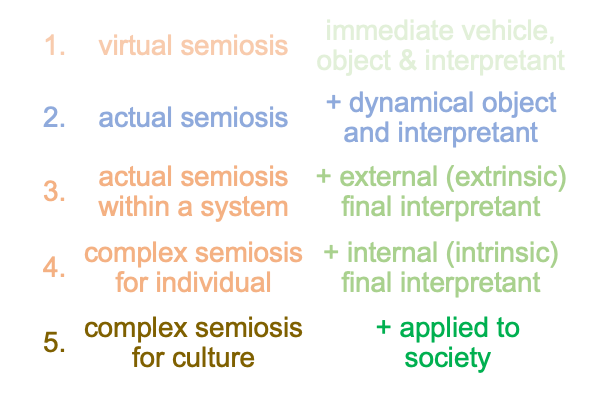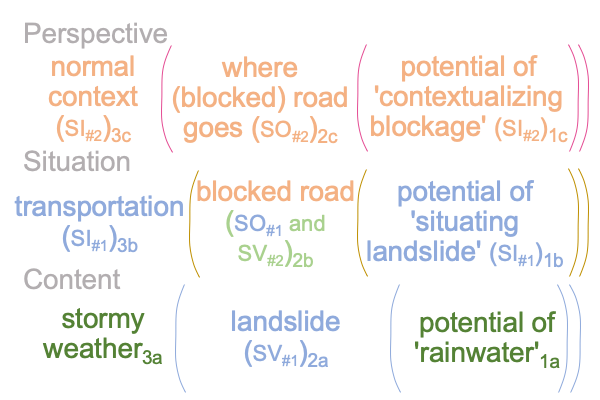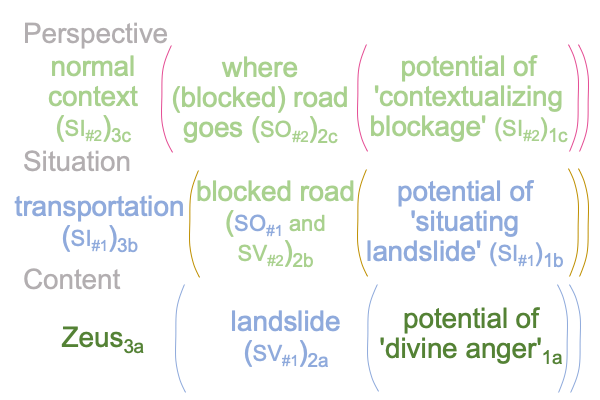0107 Here is what I have covered so far in the semiotic ladder.

0108 Peirce’s semiotic ladder expands a single immediate sign-vehicle with each rung.
In contrast, the category-based nested approach puts more and more of its three-level interscope into play. Indeed, with steps three and four, Peirce’s final interpretant starts with a single situation-level actuality2b as sign-vehicle, produces a single perspective-level actuality2c as sign object, and allows two normal-contexts3c and potentials1c, corresponding to extrinsic and intrinsic final sign-interpretants.
Here is a picture of corresponding features in a three-level interscope.

0109 Say what?
Steps three and four are entangled.
Where does the third… er… fourth rung of the semiotic ladder lead?
Oh, they must lead to the fifth rung.
0110 I imagine that the fifth rung leads back to the content-level normal context3a and potential1a.
Why do I say this?
Here, I turn to ancient Greek mythology and suggest a cultural normal context3a and potential1a for the actuality of a landslide2a.

0111 Yes, this suggests a third sign, where the sign-vehicle is where the (blocked) road goes2c and the sign-object is the landslide2a and the sign-interpretant is the divine anger1a of the premier god of weather3a. This third sign is crucial to the field of anthropology.
0112 In short, the category-based nested form associates to Peirce’s semiotic ladder, but not in a facile manner.
The associations yield three types of signs.
The first two types are introduced in Comments on John Deely’s Book (1994) New Beginnings.
The third type is introduced in Comments on Sasha Newell’s Article (2018) “The Affectiveness of Symbols”.
